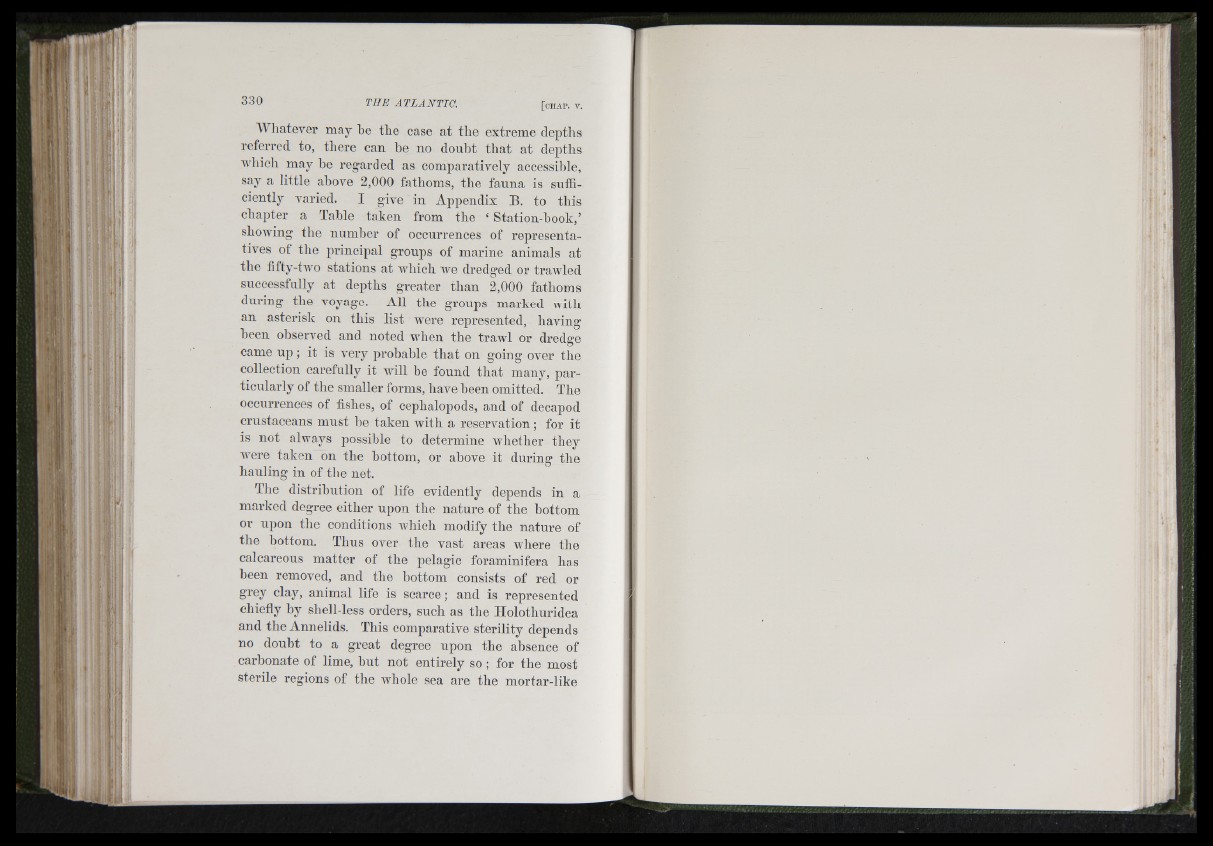
¿ii»- ;1aih ;
diiEiG P
TH E A T L A N T IG .
'I
i
ill
M hatever may be tbe case at tbe extreme depths
referred to, there can be no doubt th a t at depths
Avbicli may be regarded as comparatively accessible,
say a little above 2,000 fathoms, tbe fauna is sufficiently
varied. I gUe in Appendix B. to tbis
cbajiter a Table taken from tbe ‘ Station-book,’
sboAving tbe number of occurrences of representatives
of tbe principal groups of marine animals at
tbe fifty-tAvo stations at Avbicli Ave dredged or traAvled
successfally at depths greater than 2,000 fathoms
during the voyage. All tbe groups marked AA'ith
an asterisk on this list were represented, having
heen observed and noted when the traAvl or dredge
came u p ; it is very probable tliat on going over the
collection carefully it will be fonnd tb a t many, particularly
of the smaller forms, have been omitted. Tbe
occurrences of fishes, of cepbalopods, and of decapod
crustaceans must be taken with a reservation; for it
is not always possible to determine whether tbey
AA'ere taken on the bottom, or above it during the
hauling in of tbe net.
The distribution of life evidently depends in a
marked degree either upon the nature of the bottom
or upon the conditions AA'hich modify the nature of
tbe bottom. Thus over the vast areas where tbe
calcareous matter of the pelagic foraminifera has
been removed, and tbe bottom consists of red or
grey clay, animal life is scarce; and is represented
chiefly by sbell-less orders, such as the Holothuridea
and tbe Annelids. This comparative sterility depends
no doubt to a great degree upon the absence of
carbonate of lime, but not entirely so ; for the most
sterile regions of the whole sea are the mortar-like
ji'
i ♦
111'
■!‘i